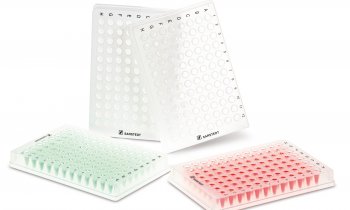News • Triggering inflammatory reactions
Parkinson’s gene initiates disease outside of the brain
Until very recently, Parkinson’s had been thought a disease that starts in the brain, destroying motion centers and resulting in tremors and loss of movement. New research published this week shows the most common Parkinson’s gene mutation may change how immune cells react to generic infections like colds, which in turn trigger the inflammatory reaction in the brain that causes Parkinson’s. The research offers a new understanding of Parkinson’s disease.
“We know that brain cells called microglia cause the inflammation that ultimately destroys the area of the brain responsible for movement in Parkinson’s,” said Richard Smeyne, PhD, Director of the Jefferson Comprehensive Parkinson’s Disease and Movement Disorder Center at the Vickie and Jack Farber Institute for Neuroscience. “But it wasn’t clear how a common inherited mutation was involved in that process, and whether the mutation altered microglia.”
Together with Dr. Smeyne, first author Elena Kozina, PhD, looked at the mutant version of the LRRK2 gene (pronounced ‘lark’). Mutations in the LRRK2 gene are the most common cause of inherited Parkinson’s disease and are found in 40 percent of people of North African Arab descent and 18 percent of people of Ashkenazi Jewish descent with Parkinson’s. However there’s been controversy around the exact function of the LRRK2 gene in the brain.
“We know that gene mutation is not enough to cause the disease,” said Dr. Kozina, Post-Doctoral student at Jefferson (Philadelphia University + Thomas Jefferson University). “We know that twins who both carry the mutation, won’t both necessarily develop Parkinson’s. A second ‘hit’ or initiating event is needed.”
Starting a “cytokine storm"
Based on his earlier work showing that the flu might increase risk of Parkinson’s disease, Dr. Smeyne decided to investigate whether that second hit came from an infection. Suspecting that the LRRK2 mutations might be acting outside of the brain, the researchers used an agent – the outer shell of bacteria, called lippopolysaccharide (LPS) – that causes an immune reaction. LPS itself does not pass into the brain, nor do the immune cells it activates, which made it ideal for testing whether this second hit was acting directly in the brain.
When the researchers gave the bacterial fragments to the mice carrying the two most common LRRK2 gene mutations, the immune reaction became a “cytokine storm,” with inflammatory mediators rising to levels that 3-5 times higher than a normal reaction to LPS. These inflammatory mediators were produced by T and B immune cells expressing the LRRK2 mutation. Despite the fact that LPS did not cross the blood-brain barrier, the researchers showed that the elevated cytokines were able to enter the brain, creating an environment that caused the microglia to activate pathologically and destroy the brain region involved in movement.
These findings give us a new way to think about how these mutations could cause Parkinson’s.
Richard Smeyne
“Although more tests are needed to prove the link, as well as testing whether the same is true in humans, these findings give us a new way to think about how these mutations could cause Parkinson’s,” said Dr. Smeyne. “Although we can’t treat people with immunosuppressants their whole lives to prevent the disease, if this mechanism is confirmed, it’s possible that other interventions could be effective at reducing the chance of developing the disease.”
Source: Thomas Jefferson University
25.03.2018











